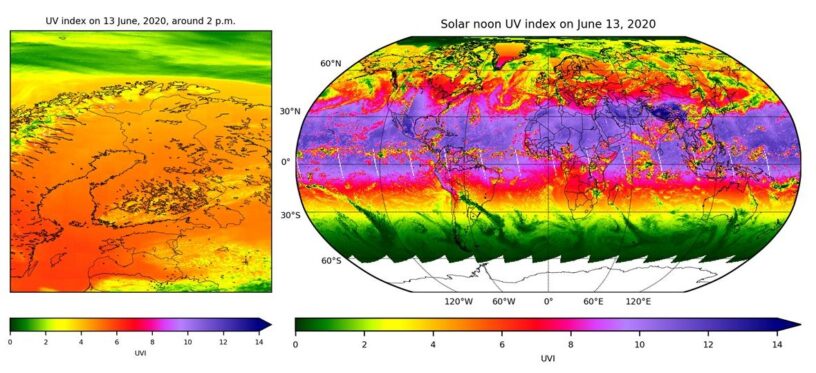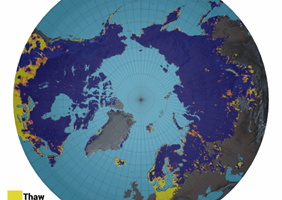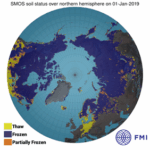The Space and Earth Observation Centre (FMI-SPACE) utilizes measurements of the new TROPOspheric Monitoring Instrument (TROPOMI) to monitor the amount of harmful ultraviolet radiation (UV) reaching the Earth’s surface. TROPOMI is the only payload onboard the ESA’s Sentinel 5 Precursor satellite launched in October 2017 and it is part of the EU Copernicus Earth Observation program.
Satellite monitoring is used to complement the traditional ground-based UV radiation measurements and to validate the UV index forecasts based on atmospheric models. The TROPOMI instrument produces much higher resolution images than its predecessors such as the Dutch-Finnish Ozone Monitoring Instrument (OMI).
UV index (UVI) is a standard measure to report the amount of harmful UV radiation that causes sunburn on human skin. Protection from sunlight is recommended when the UV index is 3 of higher.
UV radiation monitoring was initiated by the discovery of the ozone hole in the late 1970s. Satellite measurements were started in 1978 with the NASA TOMS instrument (Total Ozone Mapping Spectrometer) onboard the Nimbus-7 satellite.
More information
Senior Research Scientist Jukka Kujanpää, jukka.kujanpaa@fmi.fi
Access to the data: https://nsdc.fmi.fi/data/data_s5puv.php








Leave a Reply
You must be logged in to post a comment.